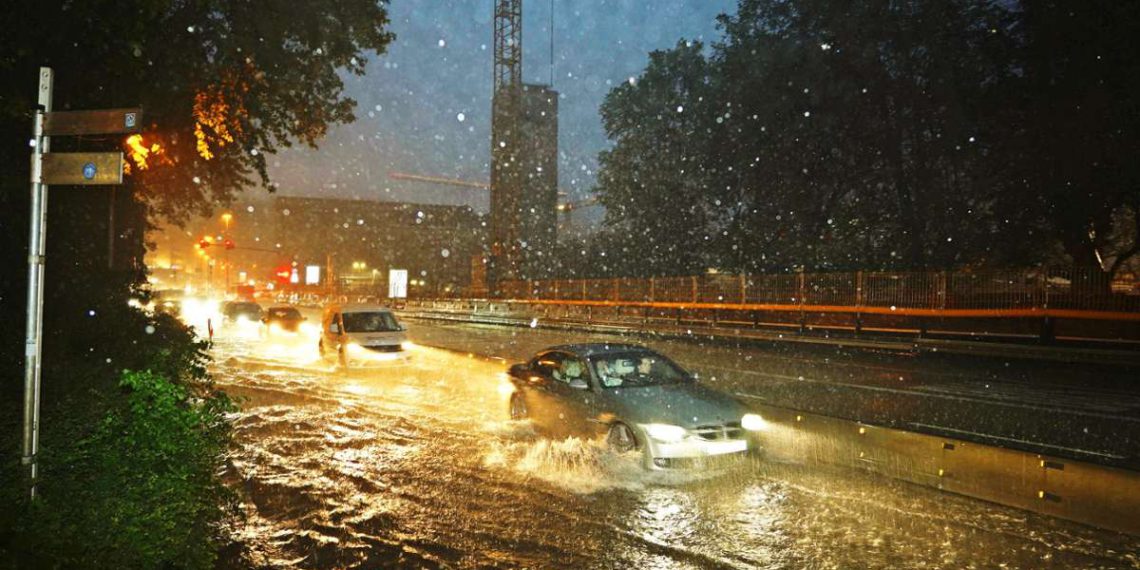The action alliance against the Stuttgart 21 rail project does not see the cause of the flooding of Schillerstraße after a heavy rainfall over the weekend in the drains reported by the police. The up to 30 centimeters high water level on the traffic axis in front of the main station was “a direct effect of Stuttgart 21 misplanning”. According to engineer Hans Heydemann, a backwater in the undersized culverts for the sewers that cross under the underground station was the cause.
Together with S‑21 critic Christoph Engelhardt, Heydemann had presented a study on “Flooding Risks from Stuttgart 21” in June 2018. The underground station, which runs right through the valley, will act like a “dam wall” in the future and inhibit water runoff — flooding, including of the station, is thus programmed. This Sunday, the “Süddeutsche” already noted. “Main station in Stuttgart flooded,” it reported online. The structure was 30 centimeters under water, it said.
“Catastrophe foreseeable”
It did not come to that, but opponents foresee it for the new underground station. “The catastrophe is foreseeable,” they wrote when presenting their study. Heavy rain events would increase, and the station trough, which would “cut through” four sewers — or make it necessary to divert them — would severely restrict the drainage capacity. The flow in the largest pipe, the Nesenbach Canal, which runs past the Königin-Katharina-Stift and Planetarium, would be reduced from around 99 to 77 cubic meters of wastewater per second, Heydemann had calculated. However, the cross-section of the culvert, at around 25 square meters, is significantly larger than that of the following old sewer, at around 23 square meters. The “cross-sections of the culvert required for safe operation,” the city administration said on Tuesday when asked, “were dimensioned according to the local requirements for extreme rain events.” As the hydraulic pressure in the sewer line increases, so does the capacity as a result of the higher flow velocity, it said. This is a desired effect to prevent sedimentation. In model tests, the TH Karlsruhe had proven the discharge capacity. Opponents criticized the small scale of 1:14, the channel length had been shortened, the evaluation was “dubious and not suitable as proof of the discharge capacity,” Heydemann wrote in his evaluation.
Groundwater as a danger
One danger for the underground station is not only excessive rain, but a groundwater level that rises too high. To prevent the structure from rising in this case, there are emergency flood openings through which water can run into the structure.

















